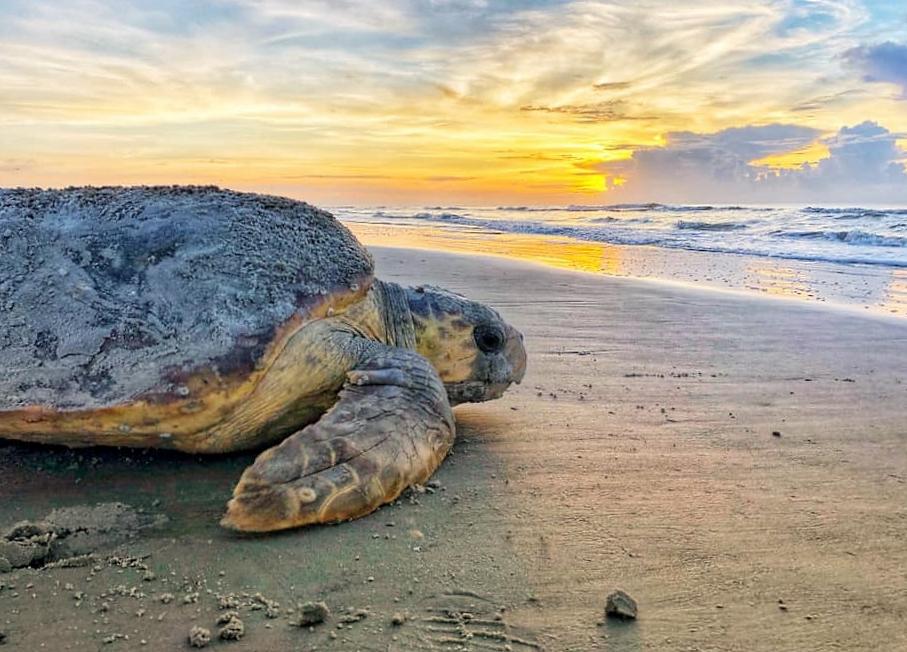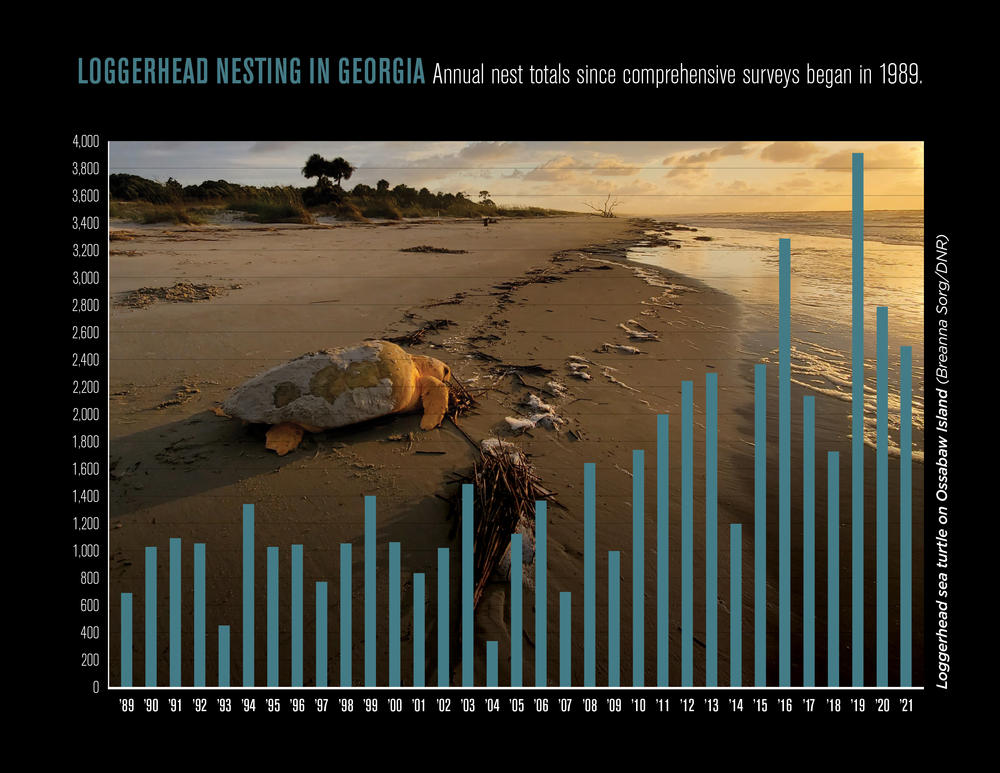
Section Branding
Header Content
Georgia loggerhead sea turtle nest numbers reach record high
Primary Content
Mark Dodd speaks about some of the ways he and others worked to recover the loggerhead sea turtle population in Georgia.

The number of loggerhead sea turtle nests on Georgia’s beaches hit an all-time record this week.
The previous record, from 2019, was 3,950 nests. Researchers have found more than 10 additional nests so far this year.
State researchers began systematically counting loggerhead sea turtle nests in 1989. The species, which is listed as threatened under the Endangered Species Act, reached a record low of 358 nests in 2004.

Mark Dodd, the Georgia Department of Natural Resources Sea Turtle Program coordinator, said at one point he was afraid we would lose loggerheads in Georgia.
“When we start losing species, it’s usually the first sign that we’ve got a problem with the ecosystem that we ultimately depend on,” he said.
Dodd said in the 1980s, when the population was declining, he and others started to protect nests in order to produce more hatchlings. They put protective screenings on the nests and reduced predator populations, he said. They also looked to reduce adult female mortality.
Every year from about May to August, female loggerheads age 30 to 35 crawl onto the beach to dig a hole where they will lay their eggs. Dodd said the increase in turtle nests that we're seeing now is a result of those efforts from 30 years ago.
Bringing loggerhead sea turtle populations back to historic levels is a long-term endeavor. Dodd said sea turtle conservation efforts have been going on in Georgia for over 50 years and he expects it will take at least another 20 before loggerhead population levels reach their recovery goals.
"We're not nearly as high as we think we were back in the '60s, but we're heading in the right direction," Dodd said.

